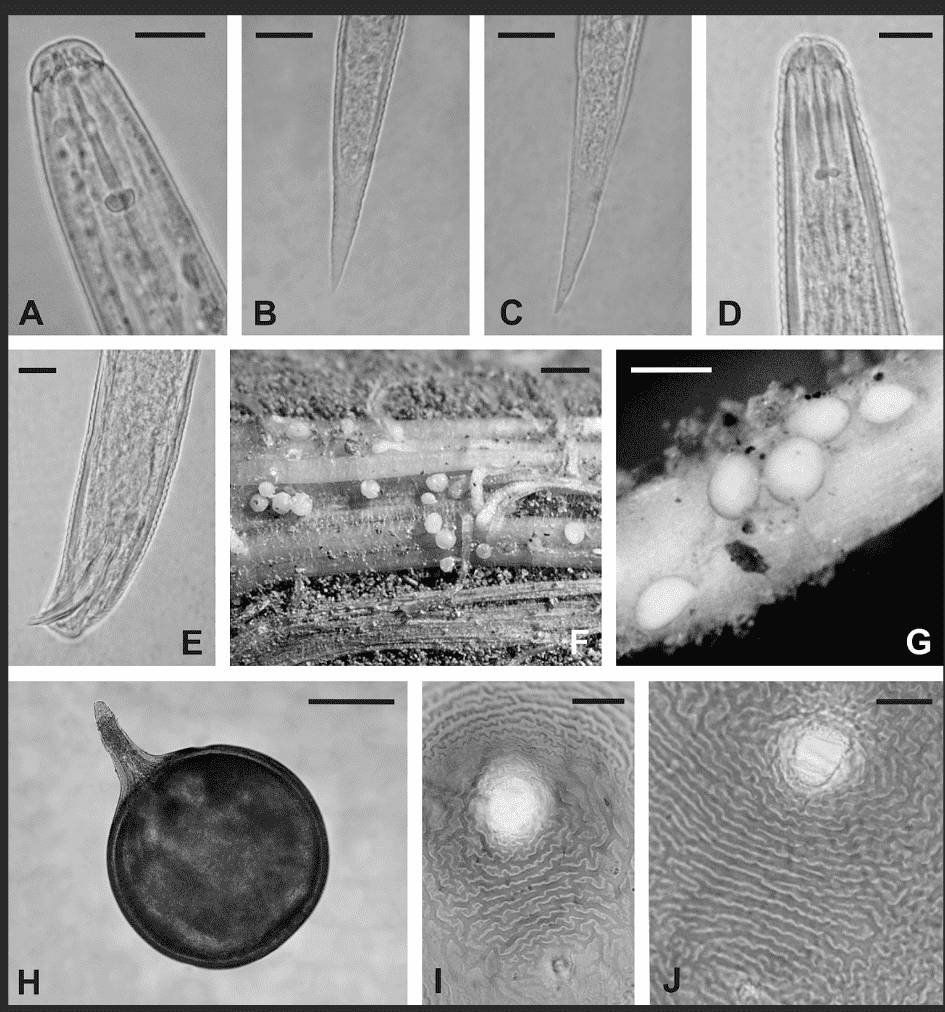Scientific classification
Kingdom:Animalia
Phylum:Nematoda
Class:Secernentea
Order:Tylenchida
Family:Heteroderidae
Genus:Globodera
Species:G. ellingtonae
Binomial name:Globodera ellingtonae

Introduction
Globodera ellingtonae is one of the potato cyst nematodes and was recently recognized as a new species in the United States. This triggered a quarantine of the fields where it was isolated to prevent the spread of this nematode to other fields.
History and significance
Globodera ellingtonae was isolated in 2008 from a field near Powell Butte, Oregon and in two fields in Idaho. After detail morphological and molecular comparisons with G. pallida and G. rostochiensis, G. ellintonae was described as a new species.
To prevent the spread of this new species, quarantine restrictions were established. The restrictions control how the land is used so the soil is not moved by farm equipment or tillage implements to new locations.
Regulatory restrictions
Due to quarantine restrictions imposed on any new pathogen, G. ellingtonae, has been restricted to the field in Oregon and the two grower fields in Idaho. G. ellingtonae is a restricted pathogen due its initial introduction into the US. Introduced pathogens are under strict regulatory conditions that prevent the spread of the nematode to new fields. APHIS sampled 300,000 additional fields in Idaho and 100,000 fields in other states and no additional G. ellingtonae cysts were found.
Life cycle
Globodera species are migratory semi-endoparasites. The nematode starts out as an egg and hatches into a second stage juvenile. The females move to roots and set up a feeding site whereas the males do not feed. When sexually mature after the fourth molt the males fertilize the female which results in eggs and development of the cyst.[6] Depending on the temperature the life cycle completes in 38 to 48 days. The cysts can remain viable for 30 years.
